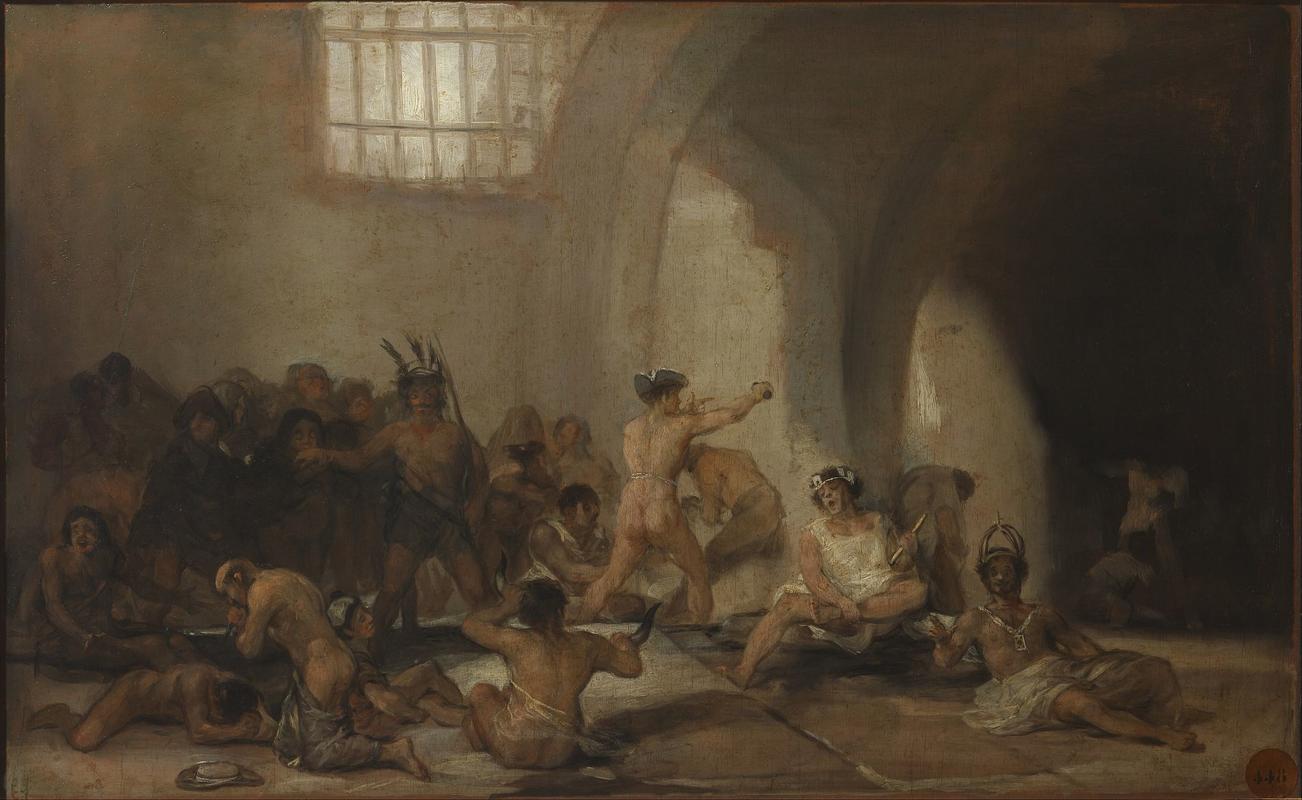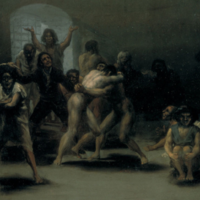More about The Madhouse

Sr. Contributor
Social crusader? Or just another artist trying to paint away his demons? In this case, Goya gives us little of both.
The Madhouse is one of two paintings by Goya set in the bowels of an asylum. His earlier painting, Yard with Lunatics was created sometime between 1793 and 1794, about a year after he had taken ill with the mysterious (possibly STI related) disease that left him isolated and incapacitated for months and essentially deaf for the rest of his life. Obviously the dude had some stuff on his mind (like lots of new voices and sounds), madness understandably being one of them.
It is estimated that he painted The Madhouse between 1812 and 1819. Poor Goya still hadn’t, and never would, escape the melancholy fear of madness that his earlier illness brought about. In this scene, as in his earlier depiction in the yard, we see a variety of figures meant to represent everyday characters left to wallow in insanity. There is a soldier (or at least someone who thinks he’s a soldier) and even a nice clergyman blessing the viewer. We can understand that no matter who you are, you too can be deemed crazy and thrown in the snake pit. This was one of Goya’s biggest fears. The dude was obsessed with the grotesque side of human nature because he was scared s@*#less that he would wind up like the people he painted. And trust me, he had good reason to fear asylums.
In 1790, just a few years before Goya painted Yard with Lunatics the French National Assembly proposed The Declaration of the Rights of Man and Citizen which, despite the freedom it’s title may imply, essentially deemed anyone thought to be mad a criminal. Thusly, people with mental illnesses were locked away, often chained to walls in communal rooms where they were left to their own devices or beaten into submission. Goya’s familiarity with such scenes was drawn from childhood visits to the local asylum (fun for the whole family!) and later inspections of the madhouse in Saragossa. The asylum in Saragossa was thought to be extremely humane because it didn’t forcibly constrain its occupants on a 24 hour-a-day basis. What gentle patient care. It can be assumed that Goya therefore painted these images in order to draw attention to the horrific treatment of mental patients…and in hopes that he wouldn’t end up like them.

Contributor
Locking mental patients in a dungeon was common practice in the 1800's.
Mental patients were also considered fair game for observation and entertainment purposes. Political correctness had not yet been invented.
Featured Content
Here is what Wikipedia says about The Madhouse
The Madhouse (Spanish: Casa de locos) or Asylum (Spanish: Manicomio) is an oil on panel painting by Francisco Goya. He produced it between 1812 and 1819 based on a scene he had witnessed at the then-renowned Zaragoza mental asylum. It depicts a mental asylum and the inhabitants in various states of madness. The creation came after a tumultuous period of Goya's life in which he suffered from serious illness and experienced hardships within his family.
Check out the full Wikipedia article about The Madhouse













